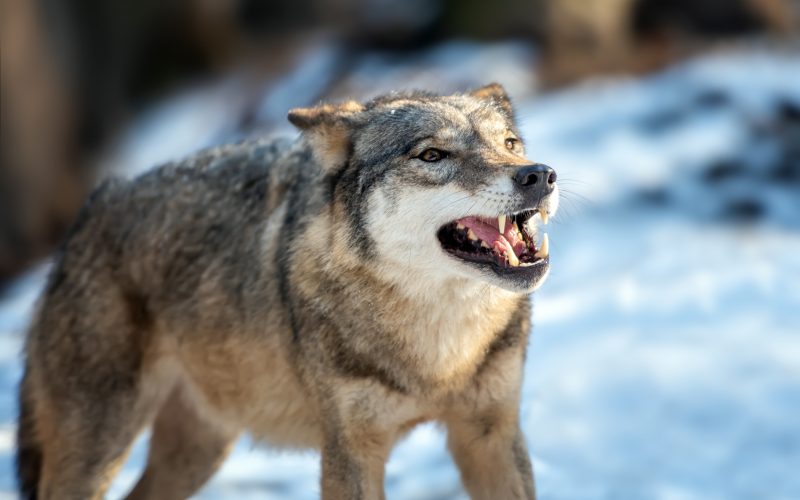A team of researchers from the University of Leeds has proposed reintroducing grey wolves to the Scottish Highlands as a means of helping the UK meet its climate goals.
The study suggests that wolves could be released into the Cairngorms, as well as the south-west, north-west, and central Highlands, where they would help control the red deer population. With no natural predators, deer numbers have soared in the UK, leading to widespread overgrazing that prevents natural woodland regeneration.
The researchers estimate that a population of 167 wolves would be sufficient to curb red deer numbers, allowing native woodlands to expand naturally. This could enable the landscape to absorb and store up to one million tonnes of carbon dioxide annually, equivalent to 5% of the UK’s carbon removal target for woodlands.
Each wolf would contribute to an estimated 6,080 tonnes of CO₂ uptake per year, making them theoretically “worth” £154,000 based on current carbon pricing models, the study suggests.
The research, published in the peer-reviewed journal Ecological Solutions and Evidence, marks the first assessment of wolves’ potential role in woodland expansion and carbon storage in the UK.
Wolves were eradicated from Scotland around 250 years ago, leading to a surge in deer numbers, which have risen from 450,000 to two million in recent years. By contrast, the wolf population in Western Europe now stands at approximately 12,000.
While the reintroduction of wolves could offer significant ecological benefits, researchers acknowledge the potential controversy, particularly among farmers concerned about livestock predation. Growing wolf populations in Europe previously led to their protected status being downgraded in 2024, a move welcomed by farmers but criticised by environmentalists.
Study co-author Lee Schofield stressed that any potential reintroduction would require extensive stakeholder engagement and said, “We recognise that substantial and wide-ranging stakeholder and public engagement would clearly be essential before any wolf reintroduction could be considered.”
Lead author Professor Dominick Spracklen emphasised the need to integrate biodiversity and climate solution saying, “There is an increasing acknowledgment that the climate and biodiversity crises cannot be managed in isolation. We need to look at the potential role of natural processes, such as the reintroduction of species, to recover our degraded ecosystems. These, in turn, can deliver co-benefits for climate and nature recovery.”
The findings add to the growing debate over rewilding in the UK, as conservationists and policymakers explore nature-based solutions to combat climate change.





















